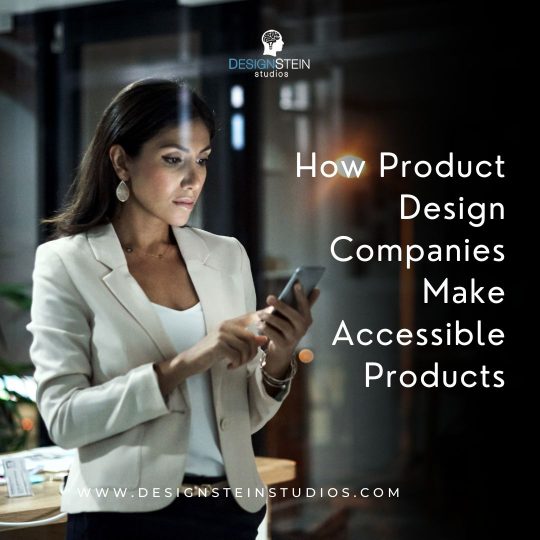Product design companies understand the importance of creating products that are not only visually enticing but also functional and ergonomic. How well a product does on the market is a reflection of its ability to meet the needs of consumers, and a successful product is comfortable and easy to use. This article will explain the significance of human factors and ergonomics in the field of industrial design and explore the ways that designers make products that are accessible to the general public.

What Are Human Factors in Product Design?
Human factors focus on how humans interact with their environment. When it comes to product design services, human factors are essential in making products that are safe, comfortable, and efficient. Designers must be in tune with the physical and psychological needs of consumers in order to build a successful product.
Ergonomics: Designing with Comfort and Efficiency in Mind
Ergonomics aims to study human abilities and limitations, and it focuses on the ways in which design can improve a person’s levels of comfort and efficiency when handling a product. For example, a product with good ergonomics can lower a user’s risk of injury and make completing specific tasks more convenient.
The Importance of Size and Shape
Size and shape are two crucial factors in determining a product’s level of comfort and ease of use. A product that is too big or small can be cumbersome for a person to use, and a product that is too heavy can hurt the wrist, hand, or foot.
Why Accessibility Matters
Accessibility is another factor that a product design and development company must take into careful consideration. A product that performs well on the market is one that everyone can efficiently use, no matter their age or ability.
Sustainability is Key
Sustainability is about designing products that are eco-friendly. An overwhelming number of consumers care about buying products that are environmentally and ethically sustainable, and sustainability is a key aspect of their purchasing decisions. That is why designers put effort into making products made from environmentally-safe, recyclable materials. Given the current state of environmental issues such as plastic pollution, water shortage, and greenhouse gas emissions, designing products that can help reduce waste and contribute to a healthier environment matters to consumers.
Examples of Successful Industrial Design Products
Here are three examples of products available to the general public that have good ergonomics and integrate human factors:
-
Apple AirPods
This product is one of the most sought-after wireless earbuds in today’s marketplace, and it is a prime example of design with human factors and ergonomics in mind. Airpods are meant to fit comfortably in the user’s ease, and the shape of AirPods is intentionally designed to stay secure in the user’s ear. The earbuds also feature touch controls for users to activate Siri, control music playback, and perform other tasks conveniently. If the user wants to play or pause music to answer a cause, they can simply double-tap on the AirPods.
-
Logitech MX Master 3 Mouse
This mouse is designed to fit seamlessly in a person’s hand, so the user need not worry about developing hand fatigue. The product also features a thumb rest that allows the user to place their hand in a natural position. The design of the mouse also makes scrolling the wheel more convenient to do.
-
Herman Miller Aeron Chair
The chair is designed to support a person’s posture, ensuring long-lasting comfort. The chair is also adjustable so users can adjust the height and armrest to their desired level.
Conclusion
Product design companies focus on the needs and desires of consumers when creating a product to put on the market. Users’ comfort and ability to easily navigate a product are critical to market success. Designers prioritize human factors and ergonomics when it comes to industrial design. By carefully selecting the size and shape of a product, choosing sustainable designs, and ensuring products can be efficiently used by everyone, designers can make products that are functional, accessible, and eco-friendly.
